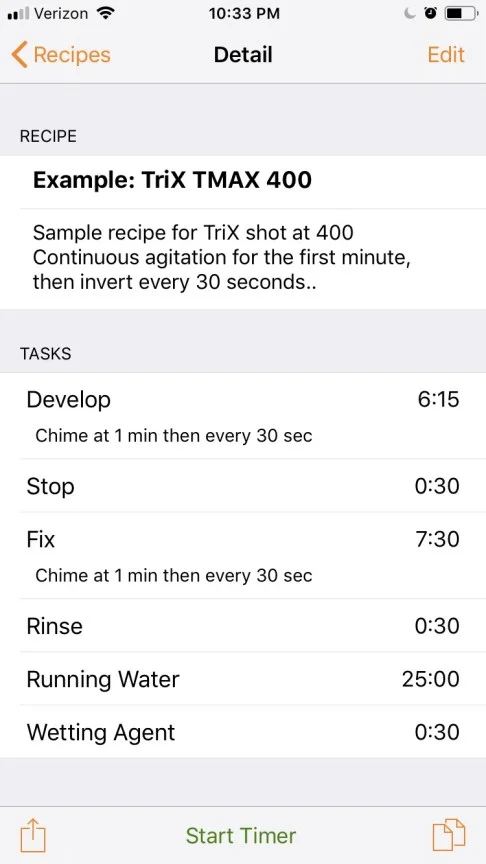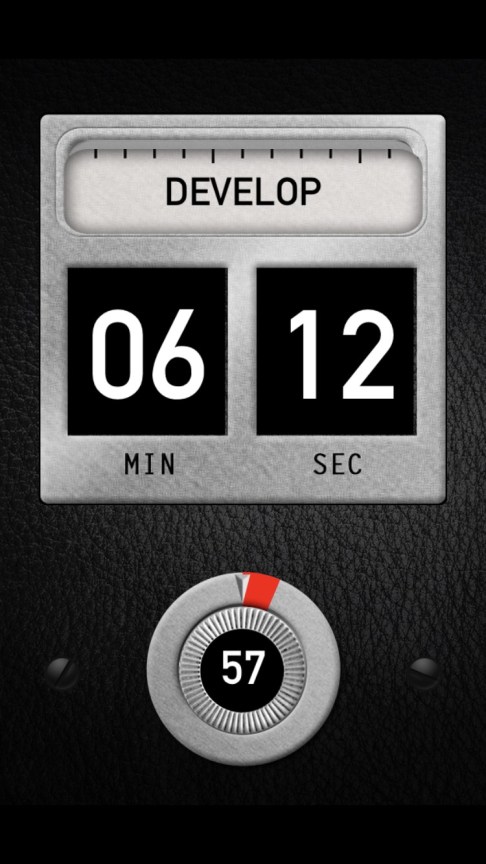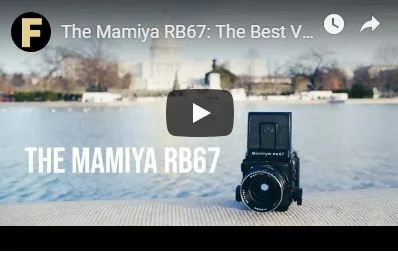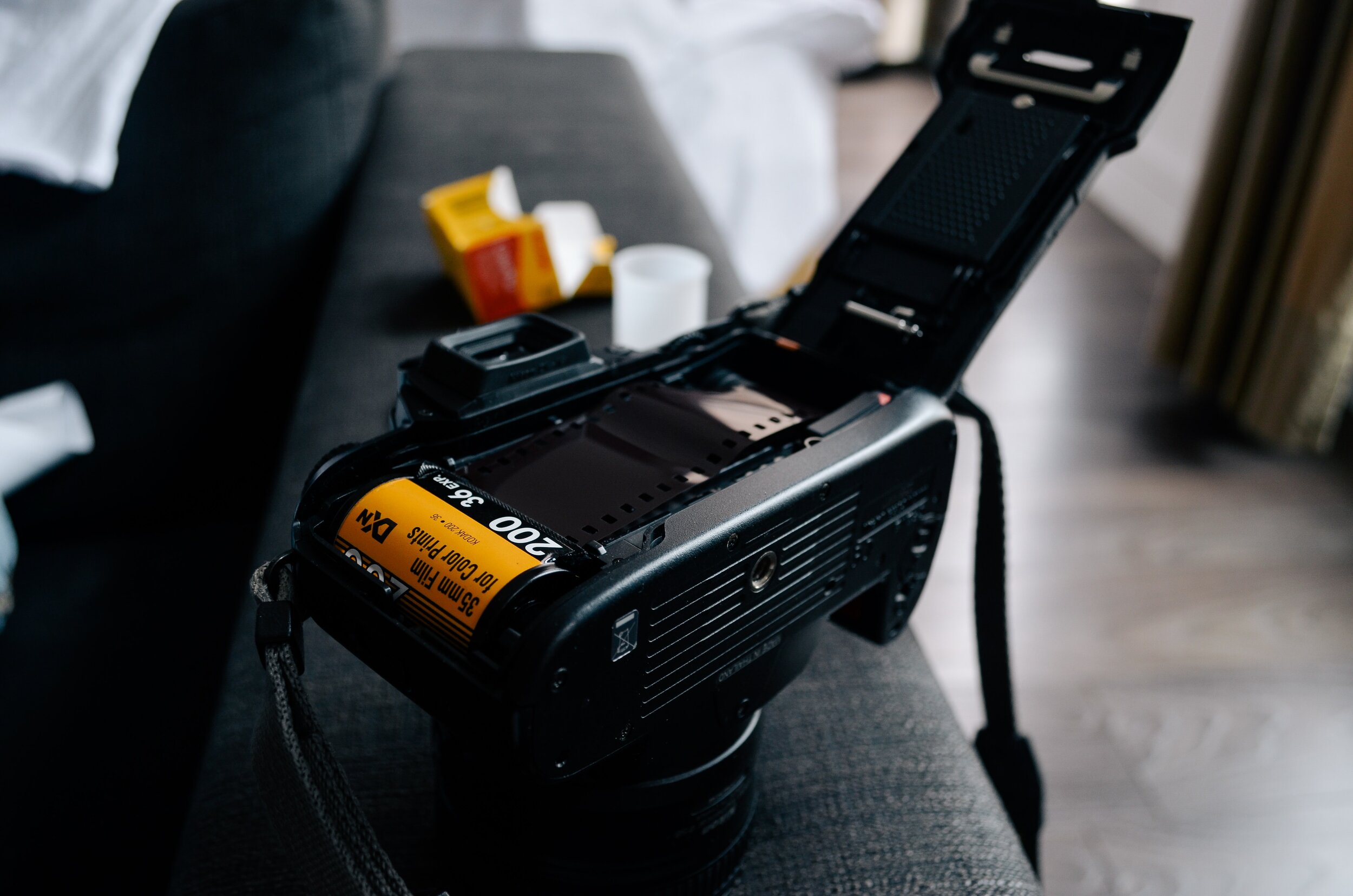How to Develop Black and White Film at Home
This page may contain affiliate links. Learn more in our disclaimer.
So perhaps you want to shoot a roll of Kodak Tri-X 400 or Ilford HP-5 400, but you’re not sure where to develop 35mm film these days? Or maybe you do, and you ship it by mail somewhere across the United States along with your Ektar 100 and Portra 400. If you're fortunate enough, you might even live near a photo lab. Regardless of your method, you're going to pay somewhere around $10 per roll of film. Remember that number, we'll come back to it later when it comes time to justify the expense of getting started.
Let's remember, this article won't explain the process of developing C-41 color film stocks at home, but it'll put you at the doorstep. If you're here, you've most likely thought about developing your own film already. So instead of spending another paragraph weighing the pros and cons, let's get to it.
Hardware
Before you develop anything at all, you're gonna need a few basic things:
Changing Bag - This is what allows you to load your film into the developing tank without the aid of a darkroom. I use a Patterson Changing Bag that I paid around approximately $30 for online(I've seen other brands for as low as $15).
Developing Tank - There are all sorts of options available out there. Some that hold only a single roll or even 8 rolls of film. Stainless steel or plastic. What I used is the Paterson Universal Tank with 2 reels. This tank holds two rolls of 35mm film or a single roll of 120/220 film. Again this will run about $30.
Reels - In all likelihood, your developing tank will come with the reels. However, I use the Omega Universal Adjustable Multi-format Reel. I've found it's just a bit easier for me to load the film with these. Each one will add about $18 to the budget.
Beakers - These are necessary for measuring out chemicals each time you develop film. I use 4x 1000ml low form graduated glass beakers. Also you'll need at least one 10ml and one 100ml graduated cylinder. A set of 10 plastic beakers & cylinders costs about $10 and around $5 to $8 each for the 1000ml & 500ml beakers. *If however you purchase a larger tank capable of developing more than two rolls at a time - you'll want to replace the 500ml beakers with 1000ml beakers.
Storage Containers - After you mix all of your chemicals, these are what you're going to be storing them in long term. I use 3 of the 1 gallon Delta 1 Datatainer Storage Bottles. They have a write on label for easy description and expiration information and are dark to prevent light degradation of chemistry. They are $9 each but it's better than attempting to use an old milk jug.
Thermometer - A 12" Laboratory Thermometer should do the trick. Also another $8 added onto the cost.
Film Clip & Film Squeegee - This is simply to hang your film up to dry and squeegee off the excess water after rinsing it. $20.
Aside from these, you'll need a pair of scissors, a bottle opener and permanent marker.
Chemicals
At this point, I recommend downloading the developing instructions for the type of film you want to develop. Here's the PDF links for Kodak Tri-X 400. and Kodak T-Max 400. and Ilford HP-5 400. In addition to the key developing times, you'll find instructions on how to adjust times for long exposures, pushing film and adjusting contrast.
Development times will vary according to which film you shoot, what type of developer you use and the temperature of your developer. For most of the black and white Kodak films, the timetables for small tank processing can be found on the third page of the developing instructions.
As you'll see, whether you get the T-MAX Developer or the D-76 Developer like me, you're going to be following the same process with just slightly different times.
The next step is to purchase the appropriate chemicals. The developer, stop bath and fixer you're going to be mixing with water (preferably distilled) and transferring into the storage containers.
This is what I use:
Kodak D-76 Developer - $14.99
Kodak Indicator Stop Bath - $25.74
Kodak Kodafix Solution - $7.95
Kodak Photo-Flo 200 Solution - $19.99
Here's a great chart from Kodak, Chemicals for KODAK PROFESSIONAL Black-and-White Films, for reference on dilution and shelf life.
So here we are. Everything has arrived and you're ready to get started. You've spent about $170 on your kit and $70 on your chemistry.
Mix Chemicals
Before you can develop any film, you have to mix your Developer, Stop Bath & Fixer and transfer it to the 1 gallon jugs. The Photo-Flo solution you'll mix on a per batch basis - as in you'll only mix enough for that batch of film you are about to develop.
Developer
We're going to start with the Kodak D-76 Developer. Simply put, it comes in a bag and the instructions are on the label. You'll probably find that the first 3 liters of water need to be at 122°-131° Fahrenheit when you mix in the solution.
My tap water comes out hot at 125° - I use that and I've never had an issue. However, I have no idea what minerals may be in your own water at home. That's where the distilled water comes into play - and in the future I'll probably return to using it. There may be an easier way to go about it, but I just put a few inches of water in a pot on the kitchen stove, then set my glass beakers filled with distilled water in them and heat it up to the correct temperature. Once the water is pour in, check the temperature with your thermometer and if it's a bit warm just wait a bit for it to cool off.
Once the Developer is mixed and in the jug, label it and date it. You're going to be using and re-using this as-is for the next 6 months. Also, if you plan on developing film right after mixing this - realize that it's going to take a while for the mixture to cool down to room temperature. I'd at least try to mix it a day ahead of time.
Stop-Bath
Some people use water as a Stop-Bath. I'm not one of them, yet. With the Kodak Indicator Stop Bath, a single pint will make 8 gallons. For now you just need 1 gallon. This time you don't have to worry about temperatures - just dilute 1 part concentrate with 63 parts water. Label it.
You'll have plenty of concentrate left over for your next batch and there is no need to discard it until the color changes to a purplish/ blue.
Fixer
Your third gallon jug will be the Fixer. Mix at room temperature, 1 part concentrate to 3 parts water. Label it. This should last you 120 rolls of film before you need to buy any more of it. I have a piece of tape on my jug and make a mark for every roll of film I develop.
Process Film
To begin the process, you've got to pry open the film cartridge, get the exposed film loaded onto a reel and locked into the developing tank. All of this has to be done inside the changing bag of course to avoid exposing the film to any light. This is easier said than done and honestly it's worth sacrificing a roll of film for a practice run without using the changing bag.
Load Film onto Reels and into Developing Tank
Get your roll of film, scissors, bottle opener, film reel, developing tank. Place them in the changing bag and zip it up. Using your hands get a sense of where the items are in the bag (hopefully you have the bag sitting on a flat surface so things are moving around).
Using the bottle opener, pry open the film cartridge and remove the coiled film. You'll need to hold the film carefully, while using the scissors to cut off the leader. Now feed the film into the reel until you can ratchet it the rest of the way. A lot of frustrations in this part can be mitigated by making sure paid attention earlier to which way the reel needs to be facing when you feed the film into it.
Once your film is loaded into the reel, fit it onto the center post and place it into the developing tank. Attach the funnel shaped lid and lock it into place. It's now safe to open up your changing bag and head to the room where you'll be processing the film with your chemicals. Whether it's a bathroom or laundry room - you'll need a sink with running water and room to arrange your beakers.
Prepare the Chemistry
How many milliliters of developer, stop bath and fixer you need in this step will be dependent on the type of developing tank you have and how many reels of film you are developing. If you're using a Paterson tank, the amounts are listed on the underside of the tank. For my 2 reel tank, I need to use 290ml of chemicals for each step, per reel.
For this example, we're going to develop a single reel of Kodak Tri-X 400. But regardless of the film we're going to need 290ml of developer, 290ml of stop bath & 290ml of fixer ready to go. It's a good idea to label the beakers to avoid cross contamination once you get started as you'll still need to know which chemical came out of which beaker.
Developing Time
Now it's time to get out the thermometer and check the temperature of the developer and refer back to the developing instructions. Since we're using D-76 Developer and the temperature is 70°, the small tank chart on page 3 tells us we need to develop for 6 1/4 minutes.
One thing I failed to mention is you'll need a timer. I use the one on my phone. There is a free film developing app available for download called "Develop!" and it works very well. Before you start, you'll need to edit the times accordingly.
As you can see above, we've calculated the Develop time and set it at 6 minutes, 15 seconds on our timer. The next times listed above we get by referring back to Page 4 in the developing instructions under "Final Steps." The Kodak Photo-Flo 200 will be your wetting agent at the very end.
By this point, if not sooner, you're realizing that all the further information you'll ever need for developing black and white film is in the published technical data of your preferred film.
Process Film
Now that everything is ready to go, pour in your Developer and hit the timer. Cover the tank with the additional lid to prevent spillage. Tap the tank a few times to dislodge air bubbles around the film. Twist the tank 180 degrees vertically 5 to 7 times in the first 5 seconds. Repeat this every 30 seconds for the remaining time. When the timer is up, remove the additional lid and pour the developer back into the beaker labeled developer.
Pour in the Stop Bath. Use the agitator that came with the developing tank to spin and rinse the film for 30 seconds. At the end of this time, pour the stop bath back into the beaker labeled Stop Bath.
Pour in the Fixer. Again cover with the additional lid and agitate using the same method and time intervals as with the Developer. The developing instructions call for 2:00 - 4:00 minutes but I usually go with 5:00 to be on the safe side. At the end, again pour the Fixer back into the beaker labeled Fixer.
Now it's time to wash the film in 65 to 75°F degree slow running tap water. It's also safe to expose your film to the light, so you can remove the funnel shaped lid and let the water run into the developing tank directly onto the film reels. Empty it out a few times then let the water overflow for the next 20 minutes. Slow the water flow from the faucet so you don't wasn't too much water unnecessarily. While this is happening return the chemicals in each beaker to it's corresponding jug. Now it's time to set up the last chemical you'll use, the Photo-Flo 200 wetting agent. You'll need just 1 part dilute for 200 parts water. Get out your 10ml graduated cylinder and pour in 2ml of the Photo Flo and pour mix it in with 400ml of water. Set aside.
After the 20 minutes is up, turn off the water and dump the water from the developing tank down the drain. Pour in your Photo-Flo and let it sit for 30 seconds. Once the 30 seconds is up you can pour this stuff down the drain - you probably have enough of the Photo-Flo solution to last for years.
If everything went fairly well, it only took you about 26 minutes or so from the time you poured in the developer until you got to this point. Remove the film from the reels and attach a film clip to one end. I hang it from a shower curtain rod, and the use the squeegee from top to bottom then attach the second film clip to the bottom of it weighted with a used 35mm film cartridge. Ideally there's not much dust floating around and you can close the door on this space for 2 hours while the film dries.
But that's it. Cut it and scan it.
$170 on hardware and $70 on chemicals. And now, you have the capability to develop 120 rolls of film every 6 months before you need to replenish any of your chemicals.
Walgreens photo costs $20 per roll and mail order photo labs about $10 per roll - so now for the price of developing 24 rolls of black and white film at a lab, you can process 120 rolls for the same price.
Mark Mackoviak lives in Washington, DC and is a founder of Focal Collective.







